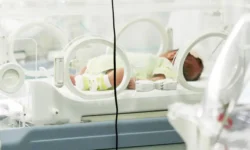“Can I sue my doctor if my baby suffers a spinal cord injury at birth?”
The human spinal cord is the pathway for signals from the brain to the rest of the body. As a result, the slightest spinal cord abnormalities could have devastating consequences for your baby. Spinal injuries at birth are associated with complicated deliveries.
Thanks to advances in prenatal care, these cases are fewer than ever. However, spinal cord injuries are still a possibility for complicated deliveries.
An estimated 6 in 1,000 deliveries result in birth trauma.
Here’s how spinal injuries may occur, the symptoms to watch for and what you can do if you suspect your doctor’s malpractice is responsible for your baby’s spinal problems.
Types of birth-related spinal cord injuries
The spinal cord is divided into 4 parts. The topmost part of the spine is the cervical vertebrae while the base is known as the sacrum. Typically, the higher up the injury, the more debilitating it is. Spinal cord injuries can range from minor bruises to complete tears.
There is an important distinction between birth-related spinal cord injuries and spine defects. Injuries occur during the delivery process, while defects develop during the pregnancy (before the baby is born). There is only so much a doctor can do about congenital disabilities during delivery. Therefore, you can’t sue your obstetrician or delivery doctor over birth defects.
To further help discern the difference between injuries and defects, here are a couple of examples of birth-related spinal cord injuries:
- Complete spinal cord injury. A type of injury that occurs when the spinal cord is completely severed. It generally results in loss of movement and sensation below the damaged portion. An infant will usually face a lifetime of paralysis, if they survive.
- Incomplete spinal cord injury. This type of spinal injury only causes partial loss of sensation and movement below the damaged level. Since the spine is not fully torn, it allows some signals to pass below the injured area. In some instances, infants born with incomplete spinal cord injury can fully recover.
Signs and symptoms of infant spinal cord injury
Due to the spinal cord’s crucial role, injuries to the baby’s spine can often be detected soon after birth. The exact symptoms depend on the severity and location of the injury. Here are the signs to watch out for:
- Total or partial loss of movement in the chest and limbs
- General lack of reflexes
- Breathing difficulties
- Loss of bowel functions
- Inability to move due to muscle weakness
Spinal injury treatment
A complete diagnosis can determine the full extent of spinal injury. Physical examination, blood tests, CT scans, X-rays and MRIs are often needed for an accurate diagnosis. Based on the results of the diagnosis, a doctor can recommend the following medical interventions:
- Immobilization. The first instinct of any parent is usually to cradle their newborn and comfort them. However, this can be dangerous. The physician should immediately immobilize the newborn’s neck and head to prevent further damage.
- Surgery. Although surgery can’t reverse spinal damage, it can be beneficial to the healing process. Surgery is often done to release pressure on the spine, stabilize fractures and treat other injuries that accompanied the spinal damage.
- Medication. The role of medicine in treatment includes pain management, controlling muscle wasting, reducing swelling and stopping involuntary muscle movements.
- Hospitalization. The spine is very delicate. The affected newborn is better off under the watchful eyes of the doctors. Normally, they also need breathing, feeding and bowel support. Equipment such as ventilators and catheters that makes this possible is only found in hospitals.
Common causes of spinal cord injuries during birth
The vertebrae and surrounding ligaments protect the spinal cord. However, these tissues are relatively underdeveloped in newborns. Prolonged pressure on the spine can lead to spinal cord injuries. Here are a few things that could cause spine problems:
- Breech births, which occur when the baby is born bottom first. In most cases, the delivery must be assisted. The baby’s head may get stuck at the neck, posing a higher risk of pediatric spinal cord injury.
- Prolonged labor, involving the mechanical obstruction of the baby’s head. This complication is known as a transverse arrest.
- Assisted delivery where vacuum extraction or forceps are used.
- Premature birth.
- Shoulder dystocia (where the baby’s shoulder gets stuck on the mother’s pelvis during delivery).
- Cephalopelvic disproportion (where the baby’s head is too big for a vaginal delivery). In such cases, a caesarian section may be the best alternative.
Medical malpractice during childbirth
Modern deliveries are much safer for both the mother and baby than they used to be. Thanks to advanced technology, medical professionals can better monitor the pregnancy and prepare accordingly for a safe delivery.
Unfortunately, some doctors still fail to adhere to the set standards. Negligence or poor judgment can sometimes lead to spinal injuries, among other life-long complications. In such cases, the child and their parents may be entitled to financial compensation if your child’s spinal injury was due to medical malpractice.
The grounds for medical malpractice include:
- Avoidable injury to the baby or the mother during the delivery
- A failed attempt to end a pregnancy
- Failure to warn the parents about a congenital disability in due time when the parents might have chosen to end the pregnancy
A spinal injury during birth often means the child will require special care. For spinal injuries caused by negligence, the responsible party should compensate you.
If your child suffered spinal trauma at birth, schedule an appointment with our experienced birth injury attorneys at Brown Trial Firm today to discuss the merits of your case. Your first consultation is free.
- Cerebral Palsy
- Caput Succedaneum and Cephalohematoma
- Neonatal Intracranial Hemorrhage (Childbirth Brain Bleeds)
- Hydrocephalus (Extra Fluid in the Brain Cavity)
- Cervical Dystonia
- Hemiplegia (Brain or Spinal Cord Injury)
- Hemorrhagic Stroke
- Neonatal Stroke
- HIE
- Periventricular Leukomalacia (PVL) Brain Injury
- Infant Seizures
- Spastic Diplegia (Spasticity in the Legs)
- Top Risks for Birth Injuries
- Fetal Alcohol Syndrome
- Facial Paralysis
- Spinal Cord Injuries
- Bell’s Palsy
- Brachial Plexus Nerves & Erb’s Palsy
- Klumpke’s Palsy
- G-Tubes for Newborns
- Medical Errors
- Cesarean Section & Birth Injury
- Negligence in Brain Cooling Treatment
- Craniosacral Therapy
- Occupational Therapy
- Speech Therapy
- Transition From Pediatric to Adult Healthcare
- Surgical Options for Spastic Cerebral Palsy
- Fetal Intolerance to Labor
- Jaundice (Kernicterus)
- Breech Position
- Placental Complications
- Umbilical Cord Problems
- Uterine Rupture
- Cervical Incompetence (Insufficiency)
- Blighted Ovum
- Necrotizing Enterocolitis (NEC) - Intestinal Inflammation
- Cephalopelvic Disproportion
- Meconium Aspiration Syndrome
- Amniotic Fluid Embolism
- Birth Injury from Premature Delivery
- Developmental Delays
- Abnormal Cord Insertion
- Infections at Birth
- Chorioamnionitis Bacterial Infection
- Premature birth
- Oxygen Deprivation
- Listeria
- Birth-Acquired Herpes
- Placenta Previa
- Placental Abruption
- Mismanaged Fetal Malposition
- Rapid Labor
- Obesity Related Birth Injuries
- Intrauterine Growth Restriction
- Blood Clots During Pregnancy
- Ectopic Pregnancy Misdiagnosis
- Myths & Facts About Birth Injuries
- Bacterial Vaginosis
- Gestational Diabetes
- Maternal Mortality Risk
- Oligohydramnios (Low Amniotic Fluid)
- Infections During Pregnancy
- Excessive Bleeding During Pregnancy
- Congenital Syphilis


